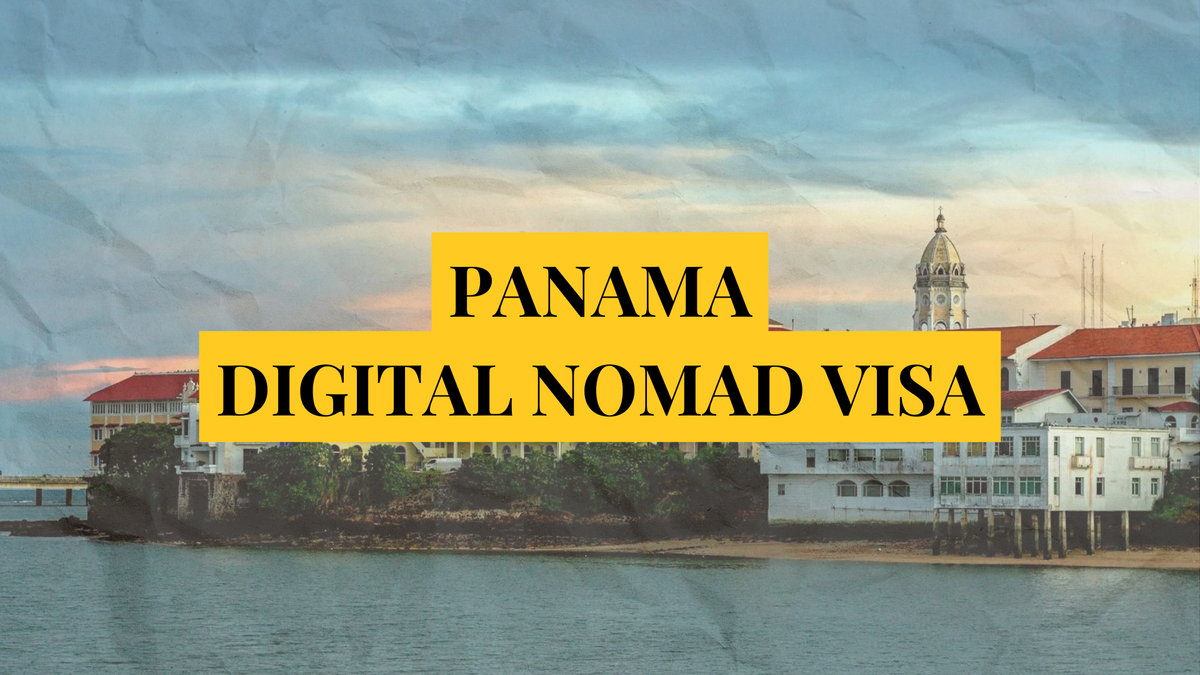Panama and Costa Rica are two popular travel destinations in Central America, each offering unique experiences for travelers.
From diverse climates and natural attractions to rich cultural experiences, there are distinct differences between the two countries that cater to a variety of interests.
Let's explore the key takeaways for travelers comparing Panama and Costa Rica:
Key Takeaways
- Both countries share similar durations for their wet and dry seasons, running from May to November for the wet season and December to April for the dry season.
- Costa Rica's beaches are known for their pristine beauty and surfing opportunities on the Pacific side, while Panama offers a mix of Caribbean and Pacific coastlines.
- Costa Rica is home to several renowned national parks, including Manuel Antonio and Corcovado. Panama boasts the biodiversity of the Darien National Park, but is less well-known for a system of national parks.
- Costa Rica features active volcanoes like Arenal, providing unique hiking and hot spring experiences, whereas Panama's Baru Volcano offers panoramic views of both oceans.
Both countries have remote work visas for longer stays.


Climate and Weather
Rainy Season
Travelers to Panama and Costa Rica should be prepared for the rainy season, which can significantly affect travel plans. In Panama, the rainy season typically runs from May to December, while in Costa Rica, it extends from May to November, with variations depending on the region.
During the rainy season, visitors can expect heavy showers, often in the afternoon, which can lead to lush landscapes but also cause transportation delays.
Here's a brief comparison of the rainy season in both countries:
- Panama: Rainfall is more intense on the Caribbean side, with Bocas del Toro experiencing some of the highest precipitation.
- Costa Rica: The Pacific coast, especially the northwest, tends to be drier, while the Caribbean coast sees more consistent rain throughout the year.
Despite the rain, this period also offers the advantage of fewer tourists and lower prices, making it an attractive option for budget-conscious travelers and those seeking a more authentic experience.
Dry Season
The dry season offers a stark contrast to the wetter months, with significantly less rainfall and more predictable weather patterns. In Panama, the dry season typically runs from mid-December to April, providing ample opportunity for outdoor activities and exploration without the interruption of rain.
In Costa Rica, the dry season is also a prime time for tourists, lasting from December to April. During this period, visitors can expect more sunshine and less humidity, making it ideal for beach vacations and wildlife spotting.
The dry season is the preferred time for many travellers to visit both countries, as it allows for uninterrupted travel and the full enjoyment of natural attractions.
While both countries experience their dry seasons simultaneously, the intensity and duration of dry spells can vary. Here's a quick comparison:
- Panama: Dry season is more pronounced on the Pacific side, with the Caribbean coast remaining relatively humid.
- Costa Rica: The northwest region, particularly Guanacaste, is known for its arid climate, while the Caribbean side sees more consistent rainfall year-round.
Temperature Differences
While both Panama and Costa Rica enjoy tropical climates, there are subtle differences in temperature that travelers might notice. Costa Rica generally has a more varied temperature range due to its higher altitudes, especially in areas like the Central Valley and the highlands, where it can be significantly cooler than Panama's consistently warm weather.
In Panama, temperatures are fairly stable year-round, with coastal areas experiencing warmth and humidity, and the highlands being slightly cooler. Here's a quick comparison of average temperatures in the capitals:
| City | Average High (°C) | Average Low (°C) |
|---|---|---|
| San José, Costa Rica | 26 | 18 |
| Panama City, Panama | 31 | 24 |
Travelers seeking cooler climates may prefer the highland regions of Costa Rica, while those looking for warmer beach weather will find Panama's coastlines inviting all year round.
Natural Attractions
Beaches
Both Panama and Costa Rica boast some of Central America's most stunning coastlines, but they offer distinctly different beach experiences. Panama's beaches are renowned for their crystal-clear waters and vibrant marine life, making them ideal for snorkeling and diving enthusiasts.
On the Pacific side, surfers find their paradise with consistent waves, while the Caribbean coast is dotted with tranquil islands like Bocas del Toro, offering a laid-back vibe.
In contrast, Costa Rica's beaches are celebrated for their biodiversity and eco-friendly approach. The country's Pacific coast, with famous spots like Tamarindo, Nosara, and Manuel Antonio, provides a mix of adventure and relaxation.
The Caribbean side, less developed and more rustic, offers a unique blend of natural beauty and Afro-Caribbean culture.
Both countries have implemented measures to protect their coastal ecosystems, ensuring that visitors can enjoy the natural beauty while contributing to conservation efforts.
Here's a quick comparison of beach characteristics in Panama and Costa Rica:
- Panama: Crystal-clear waters, excellent for snorkeling and diving, vibrant nightlife in areas like Panama City and Bocas del Toro.
- Costa Rica: Biodiversity hotspots, eco-tourism focused, surf-friendly beaches, and a more laid-back atmosphere. More distinct and varied Pacific surf, mountainous, central valley, southern peninsula jungle, and Caribbean coastal areas.
National Parks
Both Panama and Costa Rica are renowned for their extensive national parks, which serve as sanctuaries for a myriad of wildlife and offer a plethora of outdoor activities.
Costa Rica's national parks are more established and frequented, with the country dedicating a significant portion of its land to conservation efforts.
In Panama, the national parks are less crowded, providing a more secluded experience.
The country's biodiversity is on full display at spots like the Darien National Park, which is a UNESCO World Heritage site and one of the most important natural reserves in Central America.
Costa Rica's national parks, such as the famous Manuel Antonio and Corcovado, are hotspots for ecotourism and boast some of the most diverse ecosystems on the planet.
Here's a quick comparison of some notable national parks in both countries:
- Costa Rica:
- Manuel Antonio National Park: Known for its beautiful beaches and capuchin monkeys.
- Corcovado National Park: Offers an intense jungle experience and is home to the elusive jaguar.
- Monteverde Cloud Forest Reserve: Famous for its cloud forests and bird watching, especially the resplendent quetzal.
- Panama:
- Darien National Park: A massive rainforest reserve bordering Colombia.
- Coiba National Park: A marine park that is a haven for snorkelers and scuba divers.
- Soberania National Park: Close to Panama City, known for its birding trails and the Panama Canal watershed.
Volcanoes
Both Panama and Costa Rica offer unique opportunities to explore volcanic landscapes, but the experiences differ significantly.
Costa Rica is renowned for its numerous and accessible volcanoes, with Arenal, Poas, and Irazu being the most famous. Arenal, in particular, is a hotspot for tourists, offering not only spectacular views but also hot springs and hiking trails.
In contrast, Panama's volcanic activity is less prominent, with Baru Volcano being the only active volcano and the highest point in the country.
While it doesn't boast the same level of volcanic activity as Costa Rica, the trek to the summit of Baru is a challenge that rewards hikers with breathtaking views of both the Pacific Ocean and the Caribbean Sea on clear days.
The choice between Panama and Costa Rica's volcanoes may come down to the type of adventure you seek: Costa Rica for more volcanic activity and hot springs, Panama for a singular challenging hike with a dual-ocean vista.
Here's a quick comparison of the volcanic experiences in both countries:
- Costa Rica:
- Arenal Volcano: Hot springs, hiking, and lava flows.
- Poas Volcano: Crater views and geysers.
- Irazu Volcano: Crater lake and panoramic views.
- Panama:
- Baru Volcano: Challenging hikes and the chance to see both the Pacific and Caribbean from the summit.
Cultural Experiences
Local Cuisine
When it comes to tantalizing the taste buds, both Panama and Costa Rica offer a rich tapestry of flavors that reflect their diverse cultures and histories.
Panamanian cuisine is heavily influenced by Afro-Caribbean, indigenous, and Spanish culinary traditions, featuring dishes like sancocho (a hearty chicken stew) and carimañolas (yucca fritters stuffed with meat).
In contrast, Costa Rican food is known for its emphasis on fresh ingredients and includes staples such as gallo pinto (rice and beans) and casado (a plate with rice, beans, plantains, salad, and a protein).
While both countries enjoy a variety of fresh seafood, Panama's coastal access to both the Caribbean Sea and the Pacific Ocean provides a slightly more diverse catch.
- Panama's Popular Dishes
- Sancocho
- Carimañolas
- Ropa vieja
- Costa Rica's Popular Dishes
- Gallo pinto
- Casado
- Ceviche
The shared culinary heritage of Central America shines through in the local cuisines of Panama and Costa Rica, yet each country has its own unique twist that makes dining a key part of the travel experience.
Traditional Festivals
Both Panama and Costa Rica offer a vibrant tapestry of traditional festivals that reflect their rich cultural heritages. In Panama, the colorful Carnival is the most significant celebration, usually taking place in February or March.
It's marked by lively parades, music, and dancing, particularly in the town of Las Tablas.
In Costa Rica, the 'Fiestas de Palmares' is a two-week festival filled with rodeos, concerts, and street fairs, drawing visitors from all over the country.
Another notable event is the 'Festival de la Luz' in December, where illuminated floats parade through the streets of San Jose.
Both countries celebrate their independence days with great enthusiasm, featuring parades, music, and traditional dances. These festivities offer travelers a unique opportunity to experience the local culture and participate in the joyous atmosphere.
Here's a brief comparison of traditional festivals:
- Panama: Carnival, Festival de la Mejorana, Corpus Christi
- Costa Rica: Fiestas de Palmares, Festival de la Luz, Independence Day Celebrations
Indigenous Communities
Both Panama and Costa Rica are home to a rich tapestry of indigenous communities, each with their own unique cultures and traditions.
Visitors have the opportunity to learn about these communities through immersive experiences, which often include traditional music, dance, and artisan crafts.
In Panama, the Guna people of the San Blas Islands are renowned for their molas, a colorful textile art form.
Meanwhile, the Ngäbe-Buglé comarca is the largest of the indigenous regions, offering a glimpse into the lives of Panama's largest indigenous group.
Costa Rica's indigenous population is smaller, but the country has made significant efforts to preserve its indigenous heritage. The Boruca people, known for their vibrant masks and the annual 'Fiesta de los Diablitos', are a testament to the enduring spirit of Costa Rican indigenous cultures.
Engaging with these communities not only enriches the travel experience but also supports the preservation of cultural heritage and the empowerment of indigenous peoples.
Conclusion
In conclusion, Panama and Costa Rica offer unique experiences for travelers with their distinct cultures, landscapes, and attractions. While Panama boasts the famous Panama Canal and vibrant city life, Costa Rica is known for its lush rainforests and eco-tourism opportunities.
Whether you prefer exploring historical sites, relaxing on pristine beaches, or embarking on adventurous hikes, both countries have something to offer.
Ultimately, the choice between Panama and Costa Rica depends on your personal preferences and travel interests.
Whichever destination you choose, you are sure to have a memorable and enriching experience in either Panama or Costa Rica.
Frequently Asked Questions
Which country has a better climate for travel, Panama or Costa Rica?
Both Panama and Costa Rica have tropical climates, but Panama tends to be hotter and more humid compared to Costa Rica.
Costa Rica's climate is more temperate and pleasant for most travelers.
Are there any significant differences in the rainy seasons between Panama and Costa Rica?
Yes, Panama's rainy season typically lasts longer and is more intense compared to Costa Rica. However, both countries experience heavy rainfall during this time.
Which country offers better beach experiences, Panama or Costa Rica?
Costa Rica is known for its pristine beaches with clear waters and great surfing spots. Panama also has beautiful beaches, but Costa Rica is often preferred by beach enthusiasts.
Do Panama and Costa Rica both have active volcanoes worth visiting?
Yes, both countries have impressive active volcanoes that attract tourists. Costa Rica's Arenal Volcano and Panama's Volcán Barú are popular destinations for volcano enthusiasts.
What are some must-try dishes in Panama and Costa Rica for food lovers?
In Panama, don't miss trying the traditional dish of sancocho, a hearty stew. In Costa Rica, sample the famous Gallo Pinto, a mix of rice and beans often served for breakfast.
Are there opportunities to interact with indigenous communities in both Panama and Costa Rica?
Yes, both countries offer unique opportunities to visit and learn from indigenous communities. Costa Rica's Bribrí and Panama's Emberá communities are known for their rich cultures.







